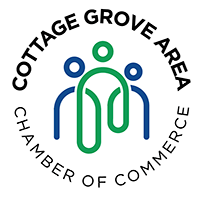Consumer attention is a currency, but throwing money at ads isn't enough—it’s also not necessary. Businesses, especially new ones, don’t need deep pockets to create marketing that leaves an impression. What matters is clarity, creativity, and knowing where effort meets return. The trick is building a marketing plan where every dollar is working as hard as the people behind the brand.
Start with the Story, Not the Spend
Most businesses make the mistake of thinking marketing starts with a logo or a launch campaign. But the groundwork happens before any money changes hands. It begins by deciding what the business stands for and how it wants to be seen—then drilling that message into every decision. A strong narrative becomes the lens through which all strategies pass, ensuring coherence even when the budget is tight. When the story leads, the spend follows with purpose.
Zero In on the Right People, Not Just More People
Mass marketing might feel ambitious, but it's rarely efficient for businesses watching costs. Reaching everyone is expensive and often ineffective; reaching the right people, however, is both cheaper and smarter. Smart marketers study their audience like anthropologists—where they hang out, what they care about, how they make choices. When the target is precise, even the smallest campaign can punch above its weight.
Structure That Supports Strategy
Changing a business into a limited liability company offers more than just legal protection—it reframes how the brand is perceived and managed. An LLC can boost credibility with customers and partners, giving your marketing efforts a professionalism that sole proprietorships sometimes lack. To skip hefty attorney costs, many entrepreneurs choose to work with a top-rated formation service; for example, those looking to compare Minnesota LLC services will find plenty of affordable, streamlined options.
Turn Existing Customers into a Marketing Engine
Customer acquisition is expensive; customer loyalty is often underused. Satisfied customers are more than repeat buyers—they're potential ambassadors. Building loyalty programs, asking for testimonials, or encouraging reviews doesn’t take a big investment, but it yields long-term trust. Word-of-mouth still outpaces paid campaigns in credibility, and businesses that leverage happy customers build an edge without paying for shelf space.
Use Free Tools Like an Expert
It’s easy to forget how many powerful platforms offer free versions that cover most marketing needs. Email campaigns, graphic design, SEO audits, and social media schedulers all have reliable no-cost options. Knowing how to stretch these tools—rather than upgrading too quickly—keeps overhead low while systems stay in motion. What matters is not just having the tools, but making them serve a defined purpose in the plan.
Create Content That Lives Longer
A single well-made piece of content can outperform dozens of posts if it’s built with staying power. Blog posts that answer common questions, videos that demonstrate product use, or guides that offer real value continue drawing traffic long after the initial share. These assets can be repurposed, refreshed, or redistributed across platforms without having to reinvent the wheel. Businesses with tight budgets should aim for content with a long shelf life and clear utility.
Collaborate Over Compete
Collaboration is one of the most underutilized budget strategies in marketing. When like-minded brands or creators work together, they combine reach and cut costs in half. Whether it’s a co-hosted webinar, a joint giveaway, or a guest blog exchange, both parties benefit from a shared audience without spending much. This kind of marketing isn’t just efficient—it’s community-building, which fosters loyalty that’s hard to buy.
Be Obsessive About Measuring What Matters
Many businesses spend money on tactics without ever checking if they work. The most cost-effective plans rely on regular review: which posts got attention, which emails were opened, which campaign brought sales. When tracking becomes a habit, waste gets spotted fast and smart bets become obvious. Tight budgets demand discipline, and knowing which dials move the needle keeps the marketing machine lean and fast.
Running a tight ship doesn’t mean sacrificing ambition. With a focused message, smart targeting, and creative execution, businesses can compete with brands that spend more but think less. The key lies in seeing marketing as a tool for connection rather than just promotion. When every action flows from purpose, not pressure, budget constraints become an asset—not a limitation.
Join the Cottage Grove Area Chamber of Commerce today and unlock opportunities to grow your business with community pride and unparalleled support!


